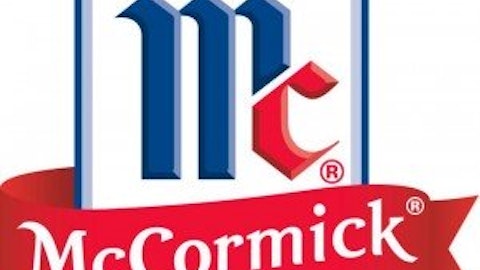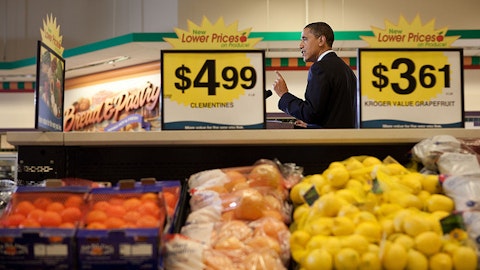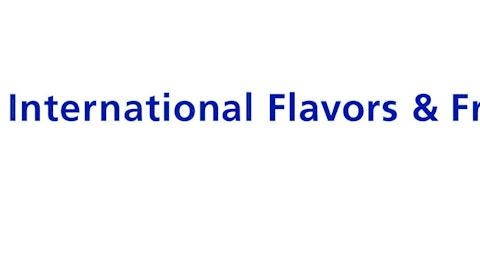McCormick’s Key Risks
From time to time, MKC’s business must put up with currency headwinds and raw material cost volatility (e.g. the price of agricultural products is impacted by weather and harvest conditions), but we don’t view these issues as threats to the company’s long term earnings power.
Issues that could structurally impact MKC’s future are changes in consumer tastes, increased competition from private label and smaller brands, a botched acquisition, or the loss of a large customer (Wal-Mart Stores, Inc. (NYSE:WMT) and PepsiCo, Inc. (NYSE:PEP) accounted for 22% of MKC’s 2014 sales).
Regarding consumer health trends, it’s no new news that organic, natural, and healthier products are taking more shelf space at almost every retailer. Consumers are reading more labels and want to know what exactly they are putting in their bodies.
McCormick & Company, Incorporated (NYSE:MKC) seems to face less risk than other incumbents because spices and herbs are not generally perceived to be health concerns with consumers. If anything, they are viewed as good things to consume and can even serve as substitutes for sodium.
MKC is also investing to combat this risk and expects over 70% of McCormick brand spices, herbs, and extracts in the U.S. will be non-GMO. About 80% of its premium gourmet lines will be organic in 2016 as well.
The threat posed from lower-priced private label products and new brands is likely a bigger concern. MKC has demonstrated excellent pricing power over time, but this has also created a sizable gap in price between its spices and herbs and those sold under private labels. MKC does have its own private label line of products, but it is a small proportion of overall sales. Hopefully the company’s brand recognition and predictable flavor tastes are enough to hold market share against lower-priced options, but we will keep our eye on volume trends.
Finally, it’s worth pointing out that Wal-Mart (11% of 2014 sales) and PepsiCo (11%) are major customers for MKC. We believe MKC’s products have strong staying power with these customers because of their brand recognition and quality, but that doesn’t mean a customer like Wal-Mart won’t try to squeeze MKC harder on pricing.
McCormick’s Dividend Analysis
We analyze 25+ years of dividend data and 10+ years of fundamental data to understand the safety and growth prospects of a dividend. MKC’s long-term dividend and fundamental data charts can all be seen by clicking here.
Dividend Safety Score
Our Safety Score answers the question, “Is the current dividend payment safe?” We look at factors such as current and historical EPS and FCF payout ratios, debt levels, free cash flow generation, industry cyclicality, ROIC trends, and more. Scores of 50 are average, 75 or higher is very good, and 25 or lower is considered weak.
MKC’s dividend is about as safe as they come with a Safety Score of 99. The company has paid dividends every year since 1925 and has many attractive characteristics, starting with its payout ratios.
As seen below, MKC’s earnings payout ratio has remained around 40% over the last decade, and its free cash flow payout ratio has hovered around a similar level. These are very healthy figures that provide MKC plenty of flexible to continue paying and growing its dividend over the years.

Source: Simply Safe Dividends

Source: Simply Safe Dividends
Beyond payout ratios, understanding how a business performed during the last recession is also helpful in assessing the safety of its dividend. Operating in the consumer staples industry, it’s not surprising to see a strong performance by MKC. The company’s sales were about flat in fiscal year 2009, and its free cash flow actually grew. MKC’s stock also outperformed the S&P 500 by 23% in 2008. This is clearly a recession-resistant business.

Source: Simply Safe Dividends





